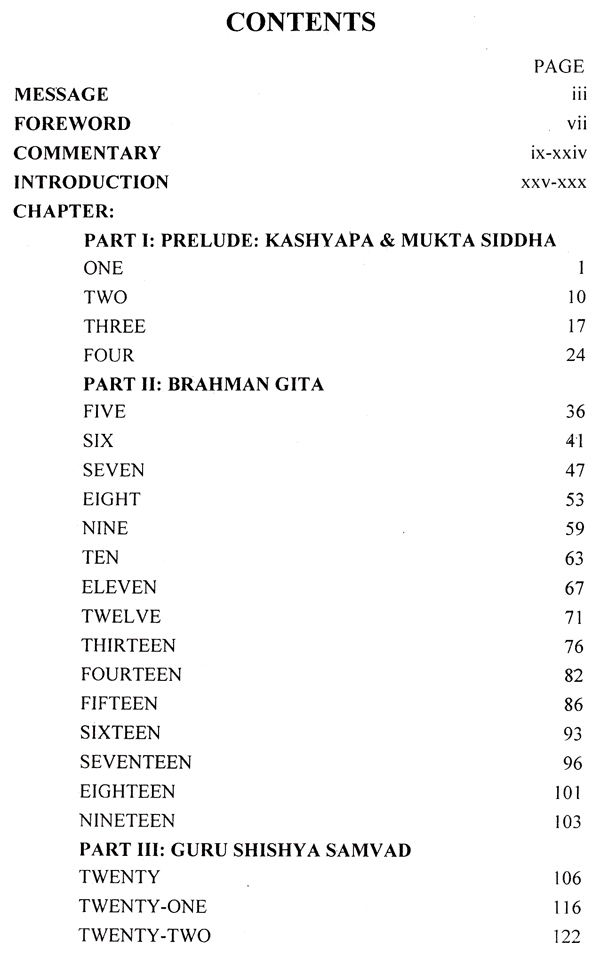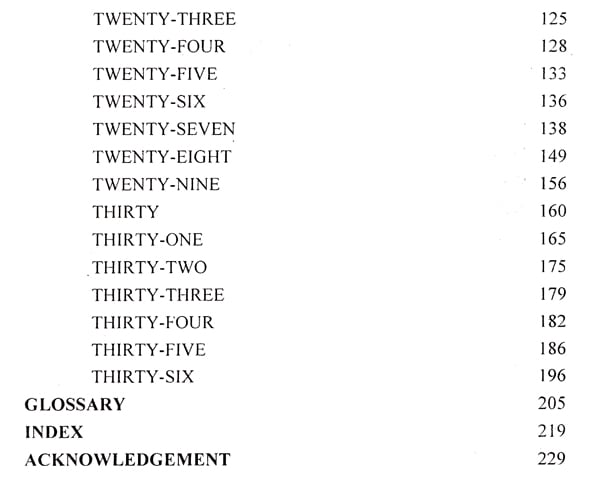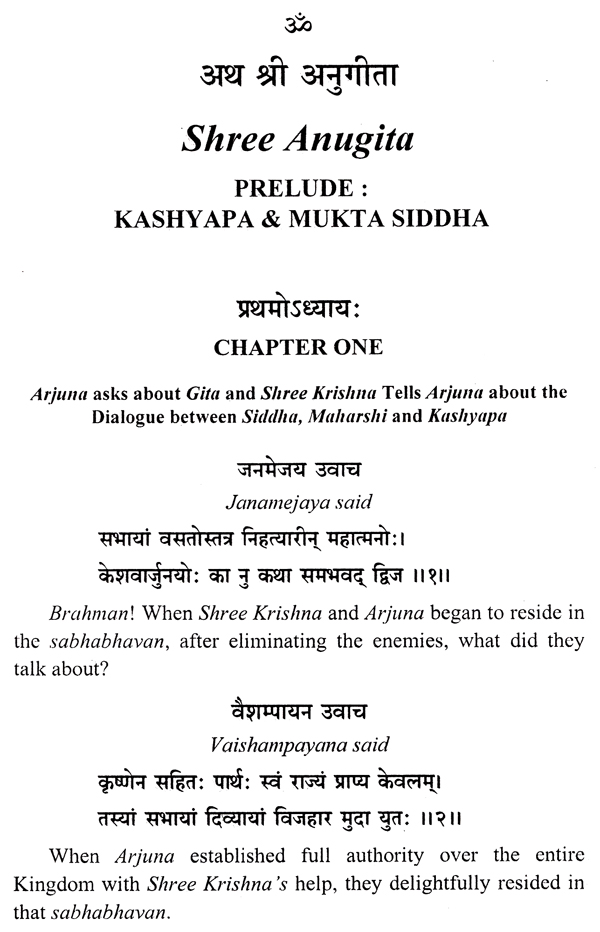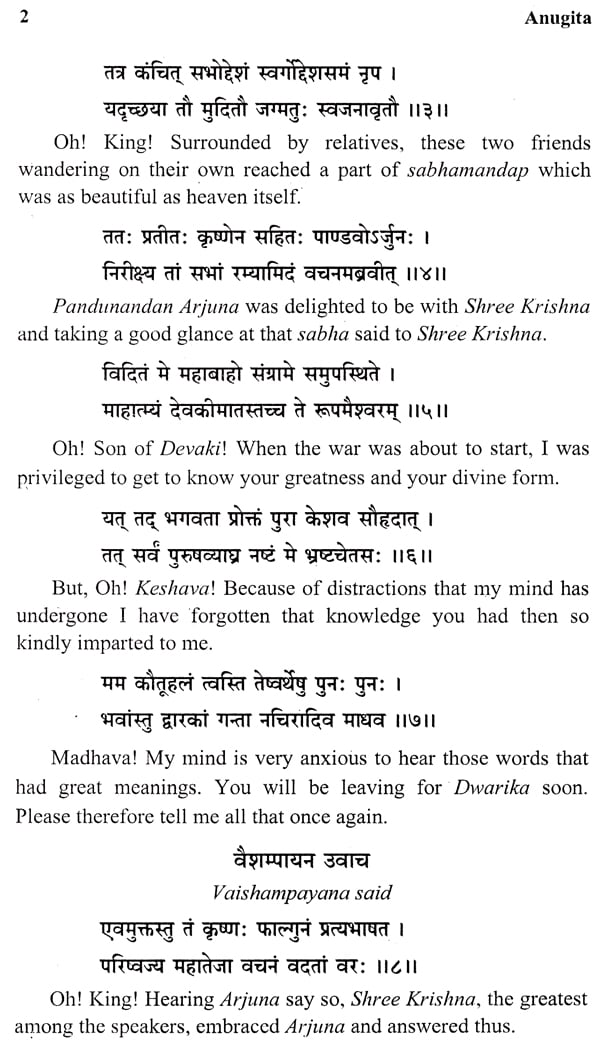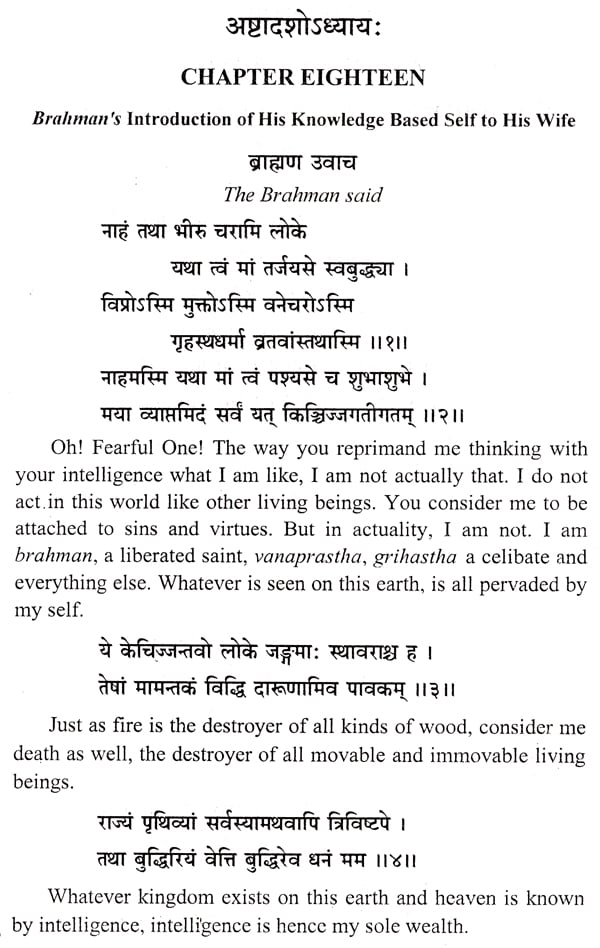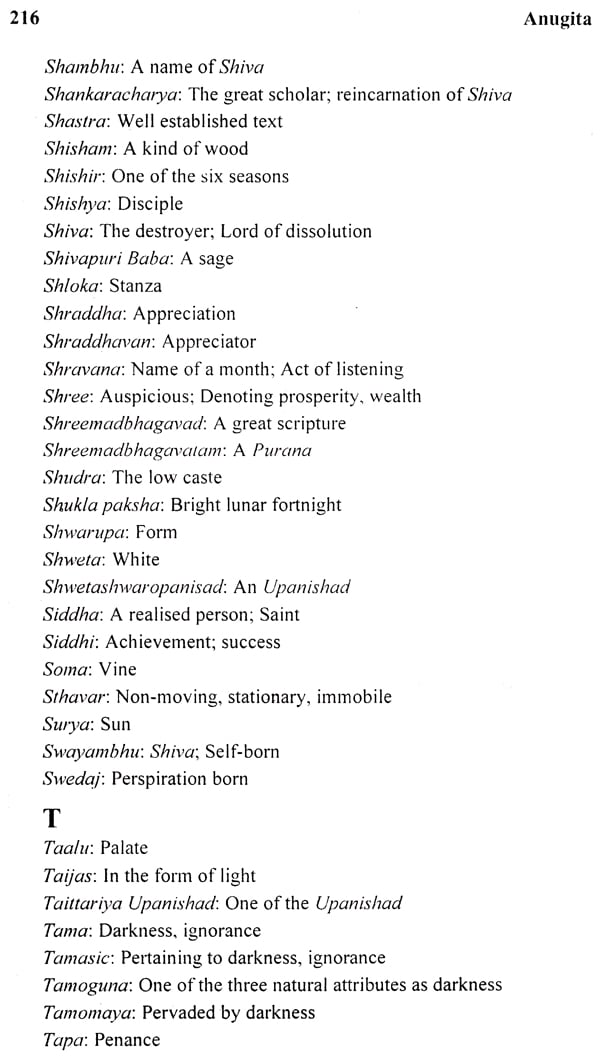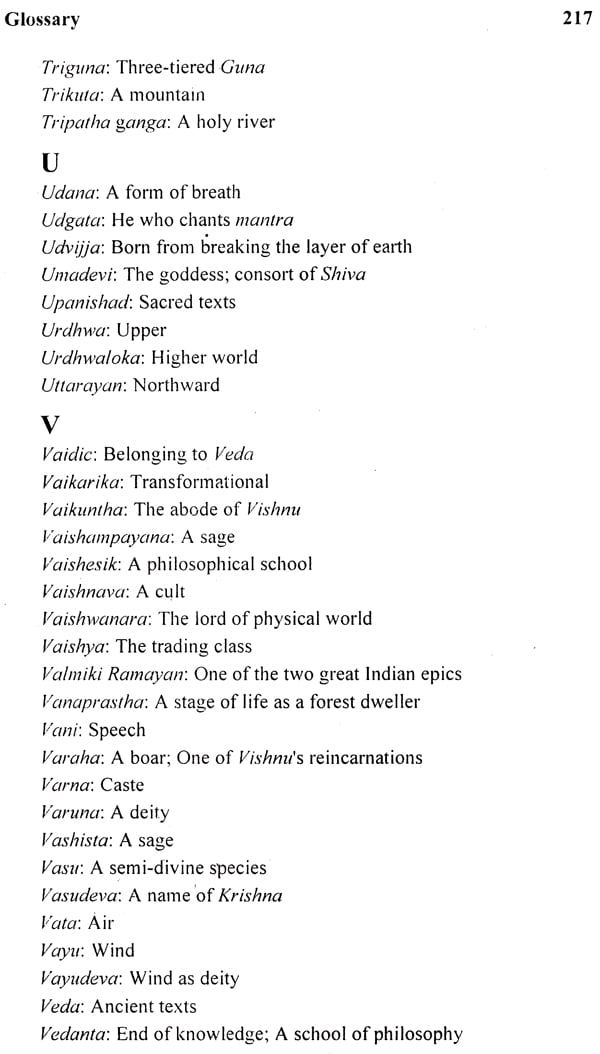
Anugita (The Follow Up Gita)
Book Specification
| Item Code: | NAS548 |
| Author: | Dr. Jagadish Sharma |
| Publisher: | Parimal Publication Pvt. Ltd. |
| Language: | Sanskrit Text Transliteration with English Translation |
| Edition: | 2006 |
| ISBN: | 9788171102785 |
| Pages: | 264 |
| Cover: | HARDCOVER |
| Other Details | 9.00 X 5.50 inch |
| Weight | 420 gm |
Book Description
Shrimad Bhagawadgita and Anugita are both parts of the Mahabharata, the former being included in the Bhishma Parva, and the later in the Ashwamedh Parva. Of the two, it is Shrimad Bhagwadgita which has gained universal popularity as a jewel among the Shastras giving the essence of their teachings and being of particular relevance to the modern age.
On the other hand, the Anugita, though a part of Mahabharata and much larger in size (36 Chapters), has not become as popular, although it is also a conversation between Arjuna and Krishna sitting leisurely at the Sabha Bhawan. At the end of the Shrimad Bhagawadgita Arjuna had assured Shri Krishna that after having listened to His teachings attentively he had got enlightenment. On the contrary, in the Anugita Arjuna says-
'Oh Keshava! because of distractions that my mind has undergone I
have forgotten that knowledge you had so kindly imparted to me.'
Amazed at this, Sri Krishna rightly remarked, "Arjuna! I had at that time imparted to you the secretmost knowledge and had also acquainted you with my Sanatana Purushottam Form, and had explained to you about all the Lokas. But now you do not remember them because of distractions that have occurred in your mind. I am not pleased with this, as it is no longer possible for me to recollect all that I had then said. The Dharma I explained at that time was sufficient to achieve Brahmatva."
Thus the Anugita is obviously not as vibrant and powerful a scripture as the Shrimad Bhagawadgita, but it does contain important teachings imparted by Sri Krishna Himself. Here Sri Krishna describes some parts of ancient history in order to enable Arjuna to grasp spiritual knowledge through narration of various episodes and dialogues, and it does give comprehensive knowledge about a vast variety of spiritually important topics which can be useful for attaining liberation and self-realisation.
Dr. Jagadish Sharma has rendered valuable service in translating the Anugita into English. With this translation the Anugita will become more readily available not only to the scholars but also to the general public.
Unlike Shreemadbhagavad Gita which is universally a very popular scripture, very few people in fact know about Anugita. Hence -a brief introduction is very well in order.
The Upanishad, Brahmasutra, and Shreemadbhagavad Gita are known to constitute prasthantrayi, three gateways in sanatan dharma. Great scholars and enlightened persons have been prone to write bhasya, explanatory details along with personal commentaries on them, a traditional process that has greatly contributed to the emergence of a systematic body of knowledge on spiritual quest for determining ultimate truth. The Himalayan subcontinent, addressed as bharatvarsha in rituals dating back to the ancient times, has continued to be perpetually blessed by souls who are known to have been thoroughly enlightened. Not surprisingly, it has come to acquire the legacy as aryabarta, the land where persons who have realized themselves continue to reappear in various forms and manner.
Among the prasthantrayi, Shreemadbhagavad Gita has been the most popular, widely read, and commented upon scripture. It originated as a prelude to the start of a great war with exhortations commanding a disenchanted warrior to take up arms against opponents who happened to be close and dear ones without any regard whatsoever to the consequences such an act entailed. It is, therefore, only natural that Shreemadbhagavad Gita has come to be regarded as a sacred testimonial to the actual requirement of everyday life for having to be vibrantly engaged in a chore of different activities by everyone including those, who inay not be endowed with sufficient knowledge, in the discharge of obligations that befall their lot. But, as such, it is an unusual blend of karma, bhakti, and gnana yoga.
To those who are initiated, the one and only message is to pursue self realization, the ultimate objective' all sanatan scriptures and saints unmistakably prescribe. But a spirited debate continues to rage, nevertheless, on the comparative superiority of karma, bhakti, or gnana as the path leading to the achievement of the underlying goal among adherents in accordance with their own predilectiOns for one or the other.
Anugita constitutes Shree Krishna's final exhortation to Arjuna in the Mahabharata before they part company with each other for ever. Hence its importance assumes added magnitude in the on-going efforts to discern the real message of the divine incarnate by all and sundry. It is sincerely felt that Anugita may help deepen the understanding of the actual message Shree Krishna tried to impart to Arjuna when he first recited it and ultimately also help facilitate the settlement of the on-going debate on karma, bhakti and gnana yoga.
Following their victory in the war at Kurukshetra, ashwamedhyagna was propitiated with great fanfare by the Pandava. This is known as the Ashwamedhic Parva in Mahabharata. After the Ashwamedhayagna was solemnized, Shree Krishna was all set to return home to Dwarika. At this point, Arjuna expresses his desire to listen to Shreemadbhagavad Gita once again and asks Shree Krishna for a repeat recital of the same. Shree Krishna, who is in fact amused at the request, cannot however do so as he was altogether in a different yogic state when he had recited it in the battleground at Kurukshetra. Arjuna is nevertheless obliged with another version, which is known as Anugita, the follow-up.
Size-wise Anugita is bigger than.Shreemadbhagavad Gita. It consists of thirty-six adhyaya but has a total of only one thousand forty-two shloka with three main parts.
The first part of four adhyaya begins as an introduction to the primacy of overriding need for liberation from the bondage of on-going cycle of birth and death by means of self realization with Shree Krishna narrating a brahman's account of a conversation between Kashyapa and a Mukta Siddha. Shree Krishna does make a point here to reiterate that his earlier recital of the same theme while in the chariot at the battleground in Kurukshetra was sufficient in itself to have led to the achievement of the underlying objective. But as has Arjuna evidently not been able to comprehend it as well as he should have, he is advised to discipline his mind by controlling its activities in accordance with the tenets as prescribed in the yogashastra. Shree Krishna's assurance that one can achieve the desired objective within six months if so pursued is especially to be taken note of as it is particularly encouraging for our generation in these modern and difficult times.
This is followed by what is depicted as brahman gita, the second, part, in the form of a dialogue between a brahman and his wife who is concerned with the non-performance of prescribed rituals by her liberated husband. This middle section takes up a total of fifteen adhyaya with enlightening accounts of dialogues between Prana and Apana, Narada and Devamata, ACharya and Yeti, Dharma and King Janaka, the story of spiritual self-kingdom as sung by King Ambarish, and Al arka 's dhyana yoga along with analyses of subtle subjects such as the origin of speech, devi Saraswati, with and without sound and interrelationships with mind and prana and among themselves.
**Contents and Sample Pages**
